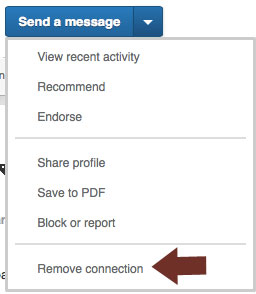Why Every Business Owner Should Write a Book (and How to Do It)

If you’re a business owner, you need to write your own book. It might be one of the most brilliant things you ever do for yourself or your business.
The question is, where do you begin? Let this article serve as a guide — showing you how to go from idea to execution to published author within just a couple of months.
The Benefits of Writing (and Publishing) Your Own Book
Authors have a special place in our society. Some might even call it a sacred place. As a collective group, we tend to elevate authors as titans of thought who have done what few others can do and write a book — a real-life printed book with ink, paper, and shiny cover.
From Plato to Hemingway to Rowling to Robbins, we authors are held in an almost mythical position by people. You might not always like what the author says, but you listen and lend credence. And with that being said, let’s explore several of the top benefits of writing and publishing your own book, specifically as a business owner.
Greater Visibility
When you have a book, you have another extension that allows you to procure visibility for yourself and your business. It gives you a reason to promote yourself and reach people.
Instant Credibility
Imagine two scenarios where you’re being introduced at an industry conference or some local event. In the first scenario, you’re introduced as, “Business owner, John Smith!” In the second scenario, you’re introduced as, “Author and business owner, John Smith!”
The second one packs a more powerful punch, right?
Whether you’re being introduced on a stage or someone simply visits your website or LinkedIn profile, being a published author gives you a degree of instant credibility. People are much more likely to listen to what you have to say.
Increased Rates
You can typically increase your rates if you run a service business when you’re a published author with a platform.
People instantly assume that you’re more knowledgeable than your competitor who doesn’t have a book. And if you’re in the world of consulting or professional coaching, this is even more true. As a result, you might be able to increase your rates by as much as 20 to 25 percent overnight.
Organized Framework
A book is also helpful in forcing you to turn all of your thoughts, ideas, techniques, and strategies into a singular organized framework.
This makes it easier to discuss your approach in a concise and cohesive manner when pitching new clients or speaking on a stage. Simply skim through the high points of each chapter, and you have a talk/pitch.
These are just a few of the low-hanging benefits. As a business owner, there are dozens of additional advantages to be enjoyed simply by writing a book and attaching your name to it for all the world (or at least your industry) to see.
The Step-by-Step Process of Writing a Book
If you just sit down and say, “I’m going to publish a book!” it can feel overwhelming. But if you break it down into a step-by-step process, you’ll discover that it’s actually not as difficult as it might seem.
There are currently 1.67 million self-published books in circulation in the United States. That’s an increase of 1,953 percent since 2008. And now you can be a part of that movement.
With the following process, you can reasonably write a book from scratch and publish it within just a few months (and without spending thousands of dollars). Let’s dive in!
1. Choose the right topic.
The first step is to choose a good topic. If you’re like some people, you might already have dozens of good ideas floating around in your head. Or this might be the first time you’ve ever thought about writing a book, and you’re trying to wrack your brain to come up with something. Either way, here are some characteristics you want in a book topic.
Expertise
Review your resume and life experiences. What areas are you an expert in? (Bonus points if you’re also passionate in these areas.) Writing a book is a lot easier if you actually know about the topic. Then, the words will flow effortlessly from your brain to your fingers to the keyboard and onto the screen.
Business Correlation
In most cases, a book is merely a tool to help you grow your business. (It’s unlikely that you’ll get rich selling your book.) So make sure there’s a correlation between your book and the business. In other words, if you run a landscaping business, don’t write a book about leadership or accounting (even if you have expertise or passion in these areas). Instead, it needs to be something related to landscaping.
Helpful
Unless you’re Socrates, Aristotle, or Plato — philosophical books don’t tend to sell well. The people who write these books are typically established authors and full-time writers. You don’t want to put out a theoretical book. Instead, your book should be practical and helpful. As a business owner, your book needs to tell someone how to do something and leave them with very specific skills, tools, or action steps they can take.
2. Break it down into concepts.
Once you have an overarching topic for your book, it’s time to break it down into a book.
The easiest way to do this is to pull out five to 10 significant concepts or steps. Each of these then gets turned into a chapter. Next, you can break each chapter down into three to five individual points (which become the outline/subheadings for each chapter).
Always, always, always start a book with a complete outline and a specific idea of where you’ll “land the plane.” This doesn’t mean you can’t pivot or shift once you start writing, but writing without an outline is a recipe for disaster.
3. Write 500 words a day.
One option is to hire a ghostwriter to write the book for you. And while plenty of people do this, it’s not always the best option for a small business owner. It can be expensive — costing several thousand dollars for a basic manuscript.
However, the biggest issue is that it’s difficult for a ghostwriter to get inside your brain and write in your voice (unless you’re paying for a top ghostwriter who is an expert at interviewing and pulling out ideas).
The second option, which is the recommended one, is to write the book yourself. And if you’re going to go this route, you need a plan. Our suggestion is to carve out at least one hour per day in your calendar and aim for writing at least 500 words.
At 500 words per day (which is totally manageable), you’ll be writing 15,000 words per month. That means you can develop a 30,000-word manuscript in just 60 days.
Considering that most printed book pages are around 300 words, this means you’ll have a 100-page book written within two months. (Or a 150-page book in 90 days.) It doesn’t sound so bad when you put it that way, eh?
4. Send it off to a copy editor.
Once the manuscript is written, you’ll want to hire a copy editor.
A copy editor is more than just a proofreader. This editor is someone who reads through your book and makes suggestions and edits based on clarity and flow. For example, they’ll tell you when to remove something, add something, or switch the ordering of chapters to create a better reading experience.
The process of working with a copy editor is vital — but it can also be painstaking and frustrating at times. So put your head down, kiss your pride goodbye — rewrite when asked — and listen to their advice. It might be a challenging three or four weeks of work, but it’ll all be worth it in the end.
Once the copy editor signs off, send the final manuscript to a proofreader who will double-check for spelling errors, grammar mistakes, etc.
5. Select a title.
Notice that we’re waiting until now to pick a title. Most inexperienced authors start with a title in mind and then write a book to fit the title. But the best way is to write your business owner book first and then choose a title that reflects what the book is about.
When choosing a title, think about sex appeal and curiosity. Choose a title that makes people think, “I have to read this.” You want to include the solution to the reader’s problem and make it unforgettable. You can also add a subtitle for clarity.
As you brainstorm titles, think in terms of your target reader. Who are they, what is their biggest desire, and what are the pain points that they experience/you can help them avoid?
6. Design the cover.
Now for the fun part — designing the cover. Again, you must wait until this point in the process to design the cover. In doing so, there will be more clarity and consistency.
While we can write an entire guide on designing book covers, here are several pointers to think through as you work with a designer.
- Make the title of the book clear, simple, and in large font.
- Use eye-catching colors and contrast to make the cover pop.
- If using a subtitle with your book, make sure the font is smaller than the title (but legible).
- Feature your name prominently on the cover for exposure. (Ideally, it should be located bottom-center.)
If you’re on a budget or have a reasonably good eye for design, you can use a self-service tool like Canva. On the other hand, if you’d rather not think about it — you can hire a book cover designer on a site like Fiverr or Upwork and spend $ 20 to $ 100 to get a fairly decent result.
7. Print and publish.
The final step in the process is to print and publish.
Find a good book printing company to help you print your book on-demand. Look for a company that’s been around a while and has positive reviews. They should also have good customer service (you can get on the phone with them and get a response when you send an email).
Once your book is printed, you can publish it. These days, publishing simply means putting the book for sale on different platforms (like your website, Amazon, a Shopify store, and anywhere else you want to sell the book).
Leveraging Your Status as a Published Author
Writing the book is hard work. But, if you follow the tips outlined above, it’s not as complicated as most people assume.
Touting your book and using it to generate visibility, credibility, and sales for your business is the rewarding part. Here are several ways you can leverage your newfound status as a published author:
LinkedIn Profile
Change your headline to include the word “author.” You can also update your LinkedIn banner to include a 3D rendering of your book, logos of the places where it can be purchased, and even a positive quote from a testimonial.
Website
Use your book as a lead magnet. Include graphics of the book and dangle a digital copy in front of people in exchange for their email addresses.
Facebook Ads
Try a “free + shipping” Facebook advertising strategy where people simply pay a shipping/processing fee that covers the cost to print and ship the book. This gives you a net-zero cost minus some advertising. This is a savvy, low-cost way to gain exposure and build relationships with customers.
Email Signature
Save some real estate in your email signature and include a small thumbnail of your book, the title, and a hyperlink to a landing page where the book can be ordered.
Introduction
As a business owner, you should be in the habit of making appearances on local news stations, podcasts, events, conferences, etc. You should also be a regular guest blogger on various platforms. And in each of these scenarios, you’ll be asked for a “speaker one-sheet” or introduction. These are great places to incorporate a blurb about your book.
Zoom Background
Do you do a lot of Zoom meetings or video interviews? Be intentional about your office background. Set up a few copies of your book on your desk or print and frame a supersized copy of your book cover.
Get creative with promoting your book. This is where all of your hard work pays off. Don’t worry so much about making sales or becoming a best-selling author, though both are great bonuses.
The goal for 99 percent of business owners is just to put a quality book out there and use it as a lightning rod for exposure and credibility. The better, the more eyeballs that see your book and correlate it to your name/business.
Putting It All Together
As a business owner, you aren’t going to write a book in a weekend, but what’s stopping you from writing and publishing a book in the next three or four months? Thanks to an abundance of DIY tools and the democratization of the publishing industry, it’s easier and more practical than ever before.
Remember, it all starts with a good idea. Then, once you have an idea, execute and leverage the tools and resources you have available to you, outsourcing to a ghostwriter if needed. And once the book is published, focus all of your energy and might on promoting the book for the business owner world (i.e., your industry) to see.
It sounds cliche, but the goal is to put one step in front of the other. So don’t try to skip steps or look too far ahead. Instead, begin small, stay disciplined, and let the results compound.
Image Credit: LinkedIn Sales Navigator; Pexels; Thank you!
The post Why Every Business Owner Should Write a Book (and How to Do It) appeared first on ReadWrite.
(37)









